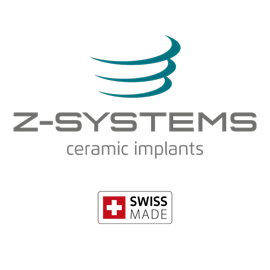Dental implants have become, without question, the best solution to replace missing teeth. Achieving results that can mimic a natural tooth to perfection, an implant, when placed by a doctor with excellent training, is nearly guaranteed to restore aesthetics and function while being comfortable with incredibly high success rates!
Moreover, within contemporary dentistry, dental implant technologies and materials are in constant evolution.
Moving forward with a more holistic and healthy approach, Zirconia has gained popularity as a dental implant material. Zirconia is a metal-free, strong and bio-compatible material. Therefore, giving dentists and patients more alternatives to choose from when planning a tooth replacement procedure.
In this article, we will discuss Zirconia and titanium implants and why you should give your patient a choice.
Zirconia or titanium?
The main difference relies on the composition of these materials.
Although both materials are highly distinct, each option possesses excellent properties.
Despite the fact titanium has a 95% success rate, it is still metal. In addition, the metal used in many dental implants is not pure but an alloy. These alloys often contain a low percentage of other metals such as aluminum and vanadium.
These metals can sometimes cause allergic reactions in a small percentage of the population leading to implant rejection and treatment failure.
On the other hand, Zirconia is a ceramic material obtained through the oxidation of the metal Zirconium. Due to its metal-free characteristic, allergic reactions are extremely rare and provide a more biocompatible and aesthetic alternative.
Aesthetic
Contrary to the gray color of titanium, zirconia is a white material. This is an important quality to consider when replacing an aesthetically compromised tooth, such as superior incisors.
If gums start receding, the white color of the implant will blend with the color of the crown on top. Therefore, giving a more natural and realistic result.
Unfortunately, titanium implants can show through thin gums, giving an unpleasant gray and unnatural look. However, this effect can be easily prevented with a Zirconia implant.
Conduction and bacteria colonization
Another difference between both materials is electrical conduction. As a metal, titanium implants can conduct electricity. Although it is not dangerous, it can cause discomfort and interact with electromagnetic fields.
Zirconia, on the other hand, is a non-conductive material. Dental implants made from zirconia can even help prevent and reduce bacterial colonization and adhesion to the surface, when compared to a titanium-alloy implant. Together, these features lower the risk of peri-implantitis after the implant placement surgery, increasing its success rate.
Which material is stronger?
Both titanium and zirconia are exceptionally durable and perfectly capable of withstanding occlusion forces.
Studies have proven that zirconia has a higher compressive strength. Therefore, it can tolerate extreme compressive forces.
With the advancements in zirconia implant design, more size and thread choices and the demand for more natural medical treatments, zirconia dental implants should be offered as a tooth replacement option.
Dental implants are fixed inside the patient’s bone ideally for the rest of their life. It is vital to fully inform patients about the differences between Zirconia and titanium implants so they can make a fully informed decision about which material they prefer to place inside their body.






